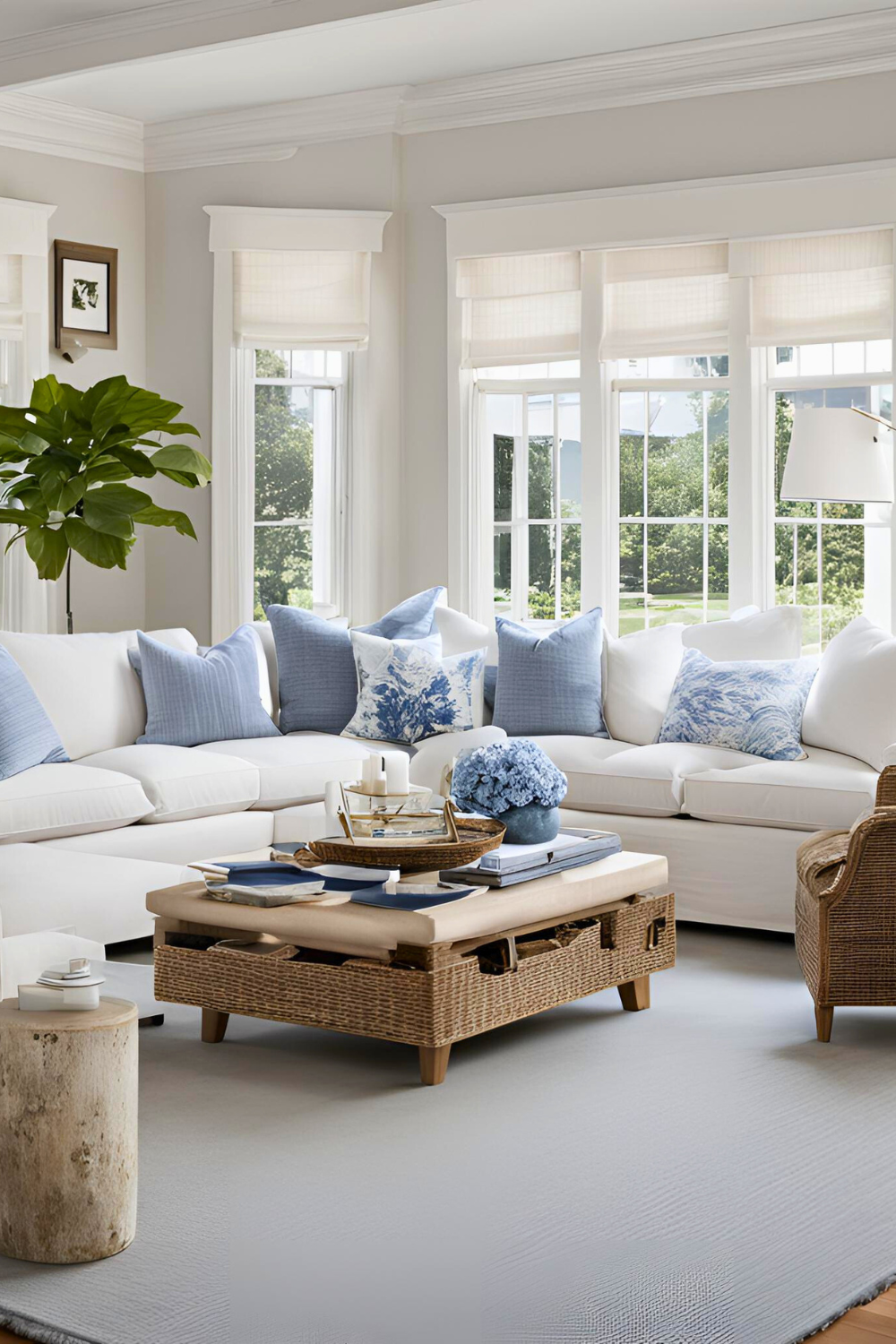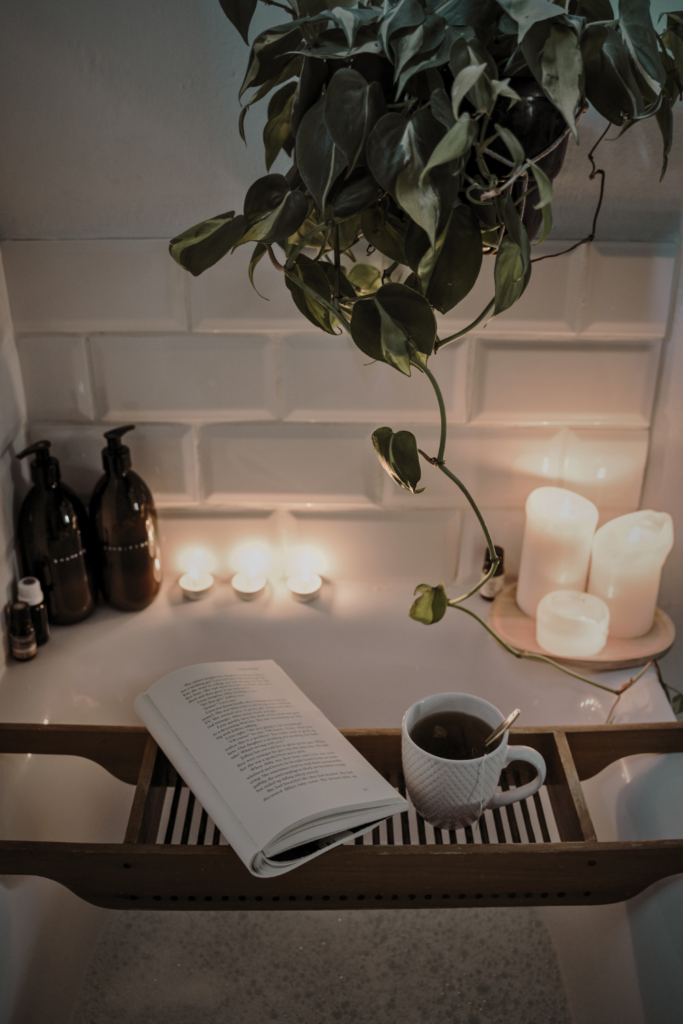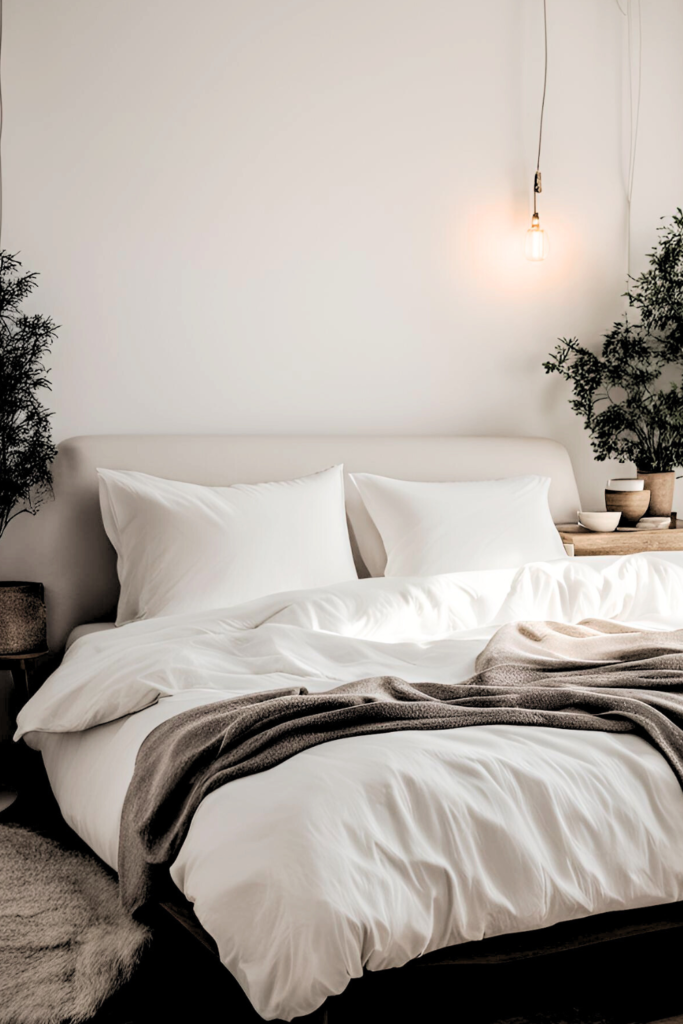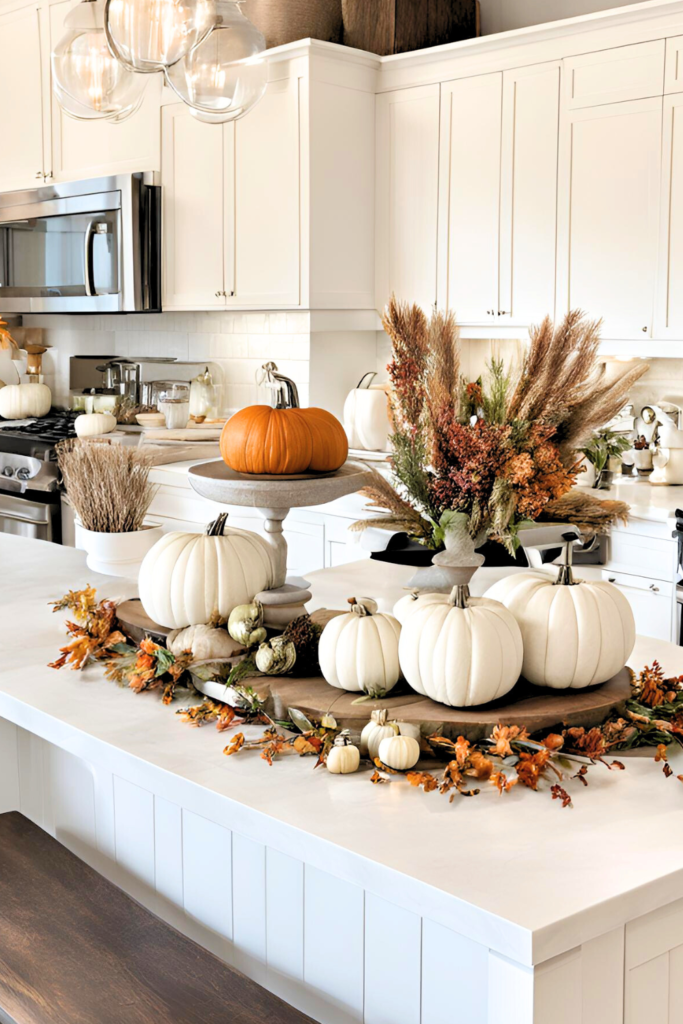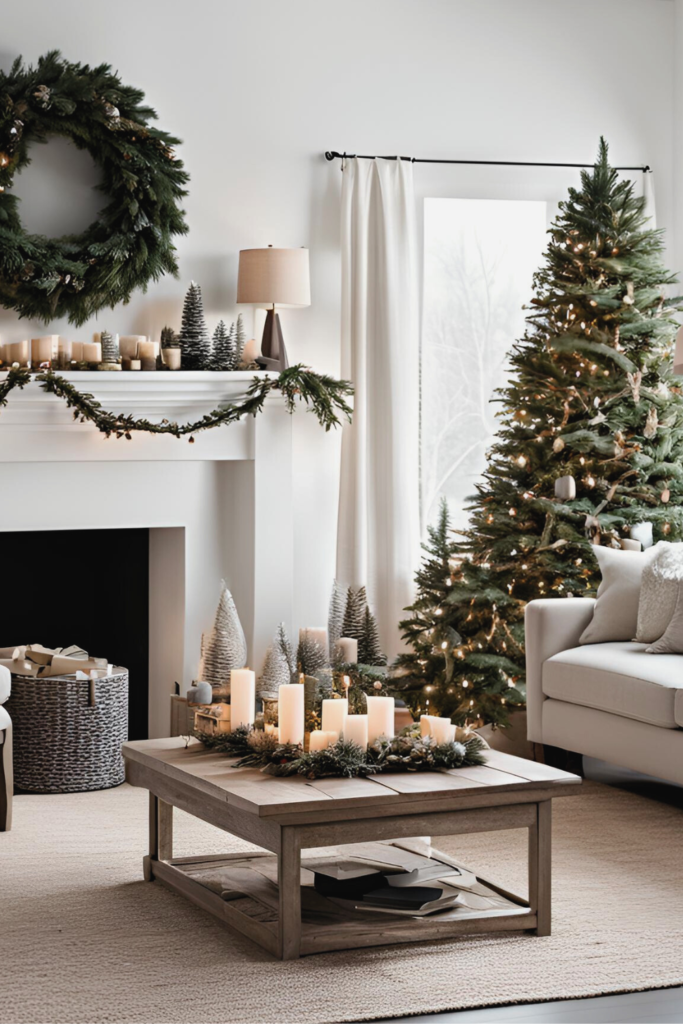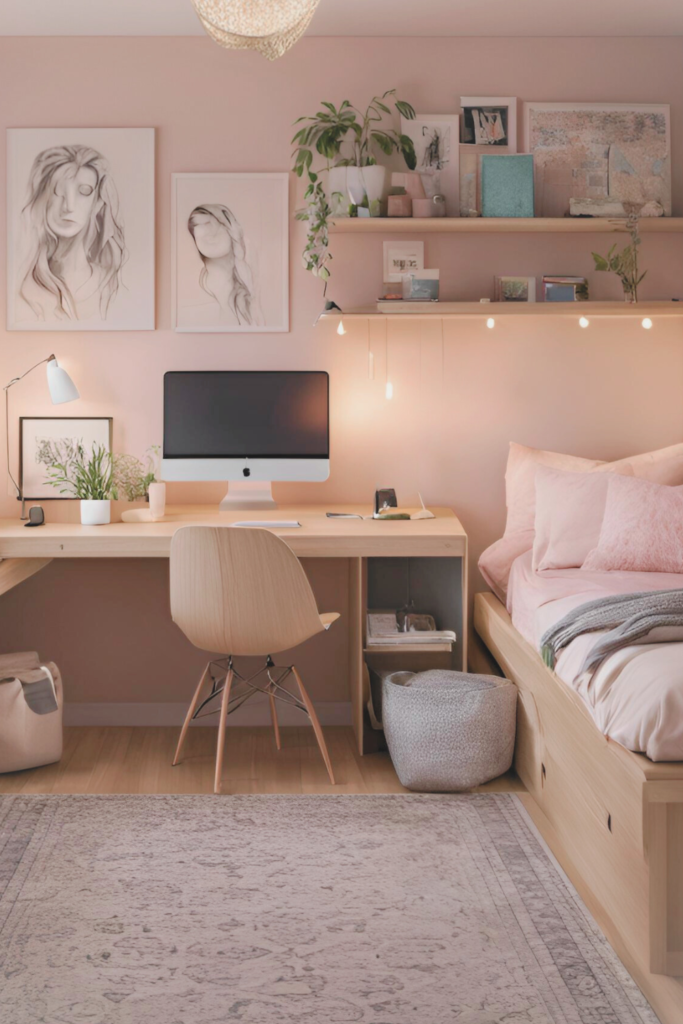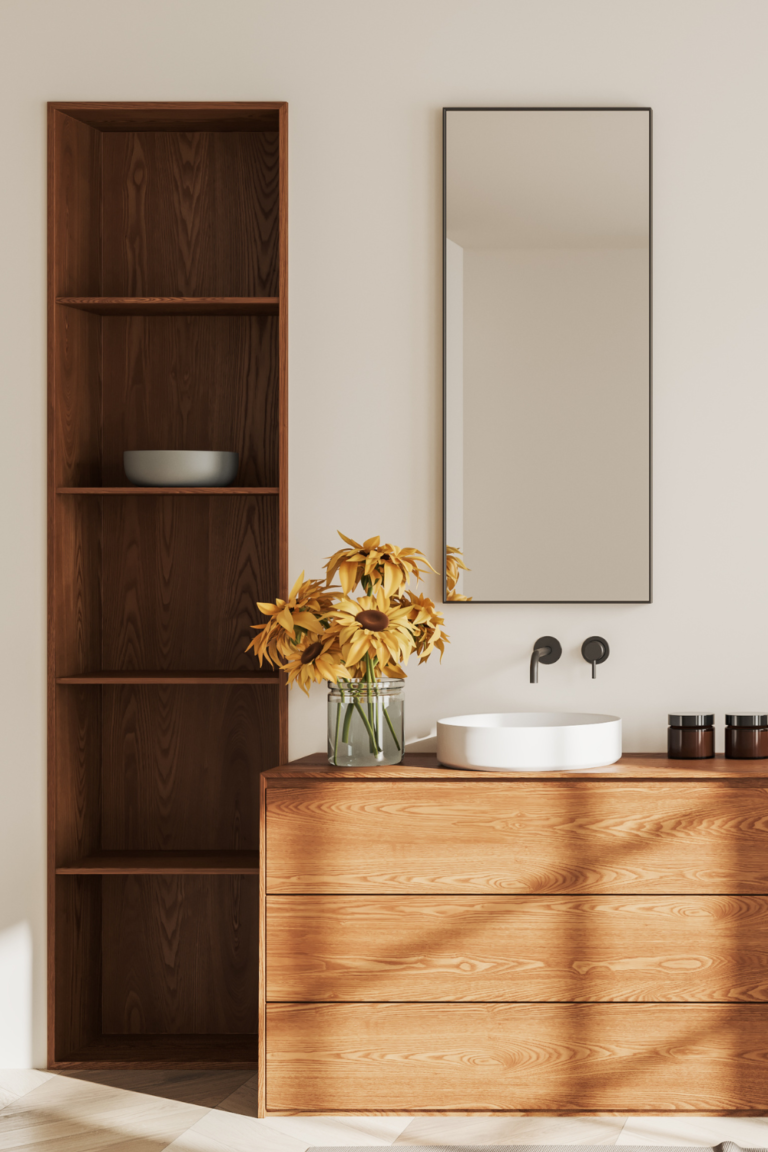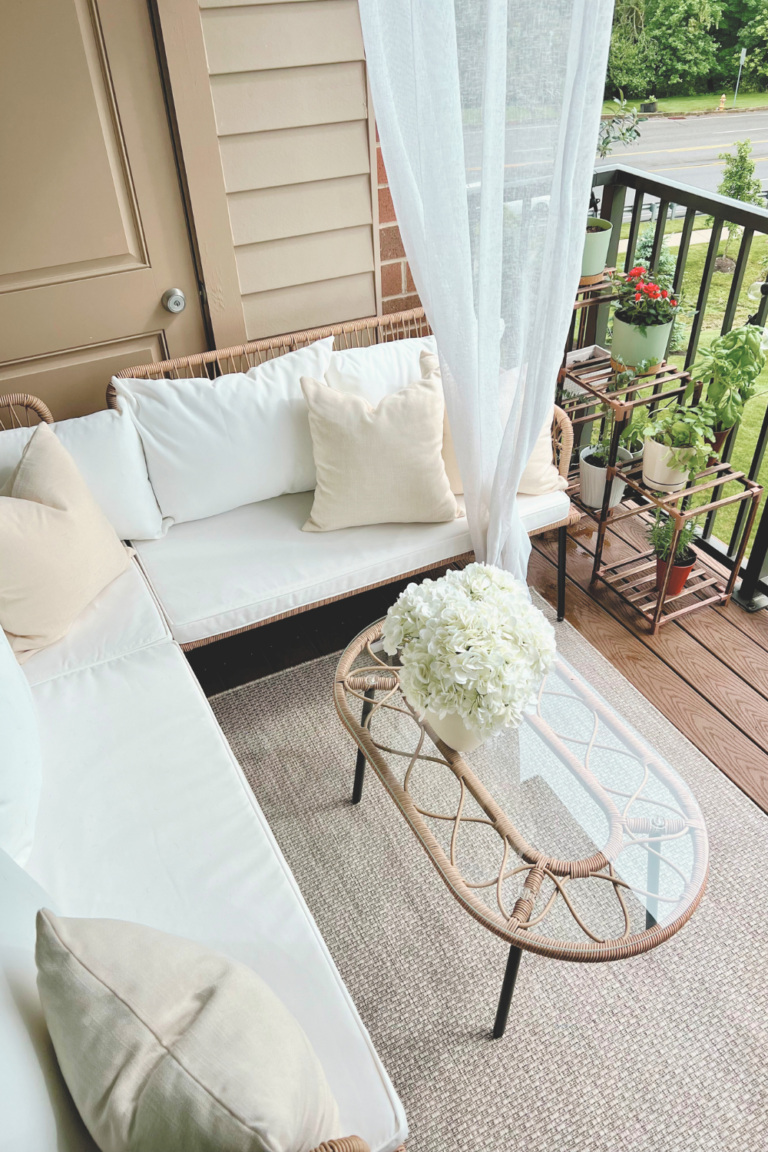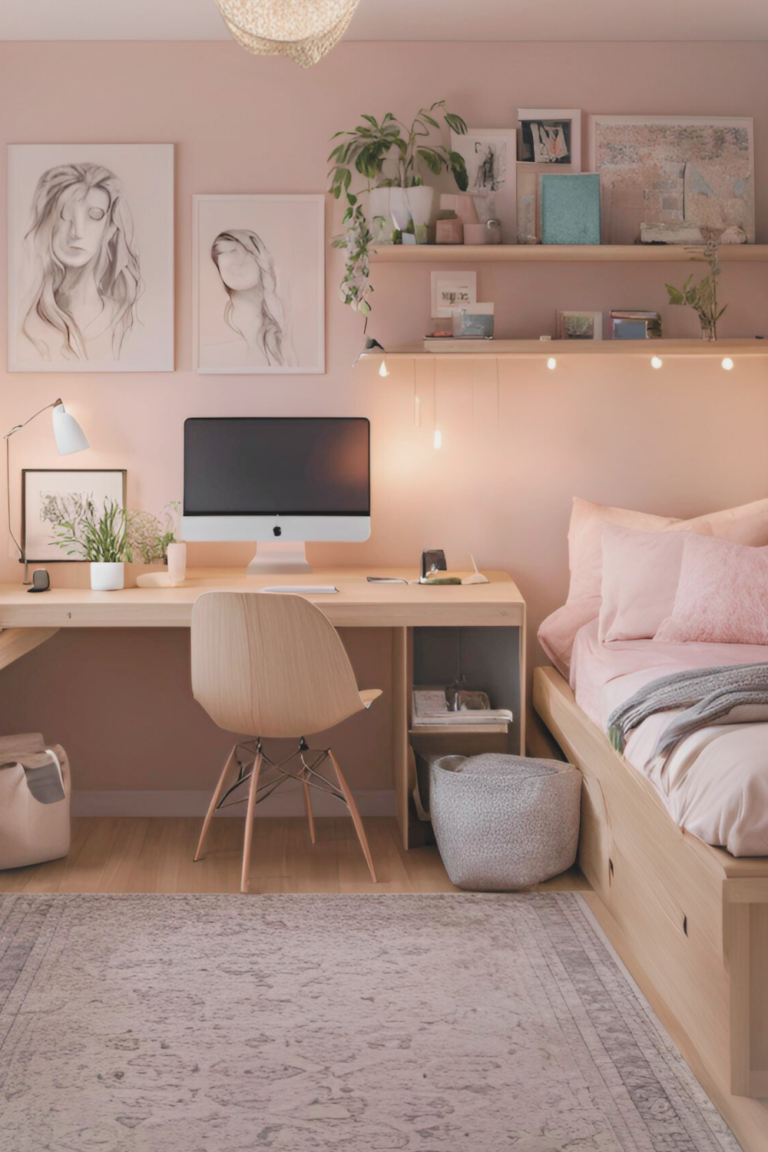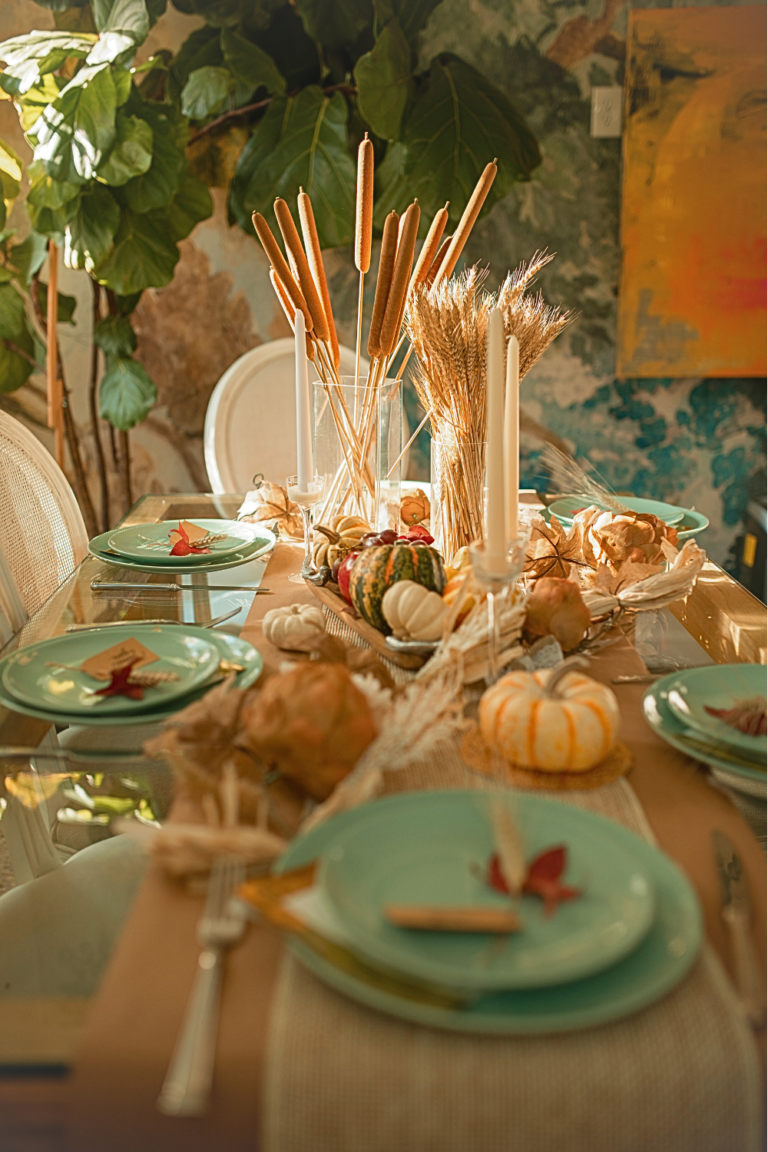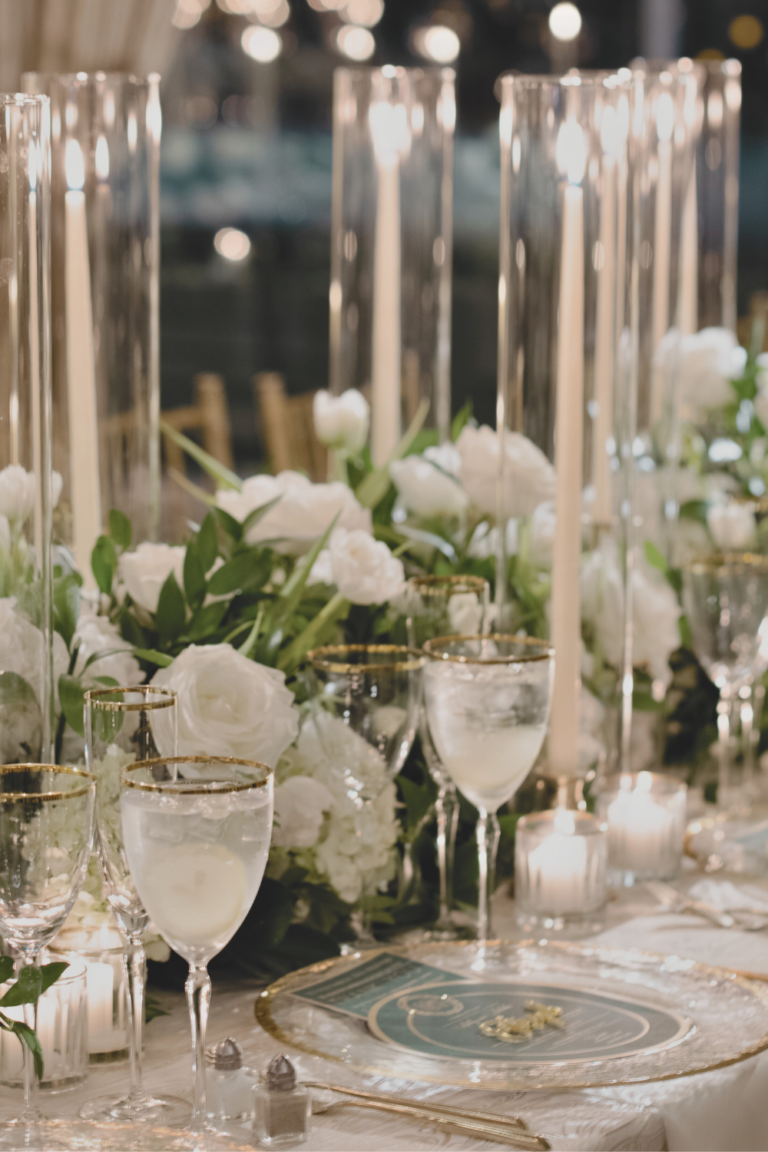How To Decorate A Living Room – 29 Easy Tips You Need Now
This is the top guide to learning how to decorate a living room. These 29 tips will definitely make your house feel like a home!
This post may contain affiliate links, which means I’ll receive a commission if you purchase through my link, at no extra cost to you. Please read full disclosure here.
As an Amazon Affiliate I earn from qualifying purchases.
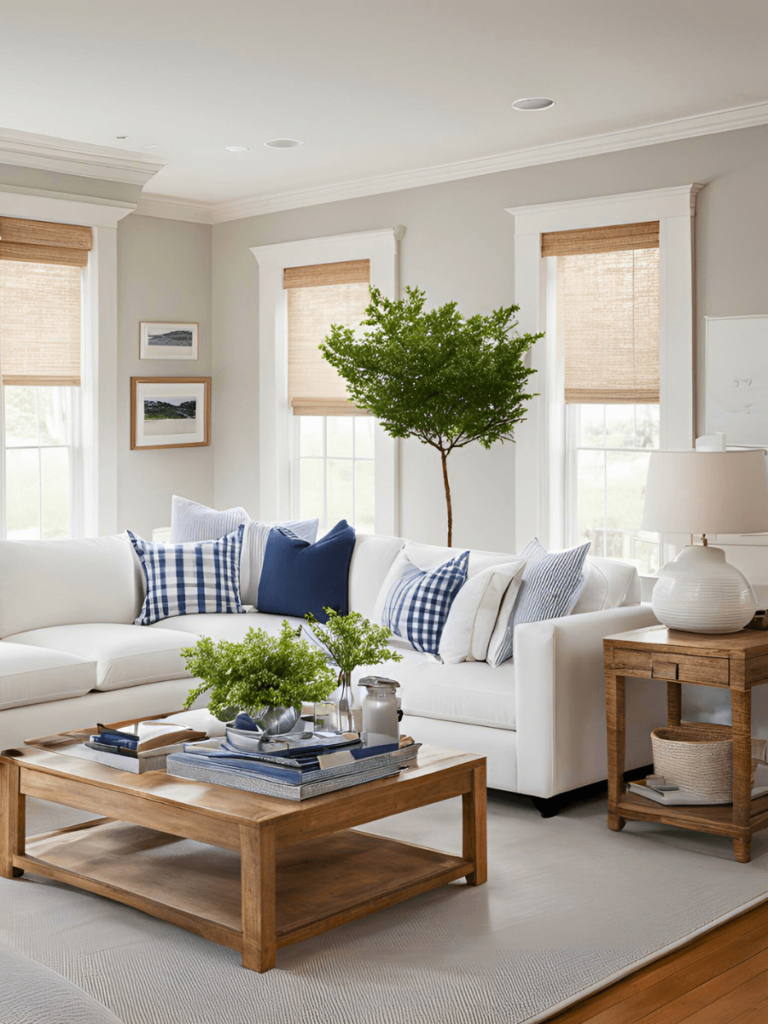
Why Read This Article About How To Decorate A Living Room
It can feel like a completely blank space or canvas so it can be really to start.
In addition, if you go into it without a plan, you might end up with…
- spending more money than you intended to
- too many decorative items
- not enough furniture or pieces
- trendy items you end up hating rather than timeless items
- cheap items that break easily and look bad
- items that are too expensive and don’t meet your budget
- too much stuff or too little stuff
- items that aren’t cohesive
- items that make your home look cluttered
- too little storage to store important items
Are these familiar? ⬆️
What I Am Offering With This Article!
There are tons of websites online with only some photos of living rooms.
But when actually bridging the gap between what their living room looks like and yours, it can be really frustrating because:
- it looks easier than it is
- they might have access to things you don’t such as thousands of dollars
- their space is better catered to their design
I want to make decorating a living room less overwhelming by teaching you rather than just showing you ideas!
The formulas used by interior designers are practical for a reason, and learning the simplistic ones will save you so much:
- money
- time
- energy
- stress
- space
I want to make it feel more fun with fun ideas but also way less overwhelming by breaking it down for you so you can actually understand what you need when decorating your own living room.
Let’s begin!
How To Decorate A Living Room For Beginners

Decorating a living space might seem like it has no guidelines or rules to follow… which feels like a free-fall.
But truly you already have guideposts all around you… it’s just a matter of identifying them!
Spa Bathroom Ideas – The Best Luxurious But Affordable Tips
Bedroom Decor Ideas For A Calming Space (Beautiful)
Thanksgiving Decor – The Best Easy Decorating Ideas For Home
Christmas Decor Ideas – The Best Decorations And Tips
Dorm Decor Ideas – The Best Stylish, Space-Saving Inspo Now
How To Decorate A Living Room Floor Plan?
Understanding what you have and what you need in your living room is a simple way of determining where to begin with decorating a living room.
What we are relying on when determining how to decorate a living room, what we need to rely on to start is constraints.
It might sound strange but stick with me … constraints are essentially the limitations you have.
The limitations you have set are the rules you need to follow in order to make your space look cohesive and actually work well. ✨
The great news is that there are a lot of constraints to work with, as crazy as that might sound!
Now it’s time to start thinking about the layout.
The way to determine your constraints, or more simply, what you’re working with is to ask yourself questions first:
Questions To Determine Your Living Room Floor Plan
Important Reminder
Remember, the most important constraint to remember with all of this is budget.
It’s a good idea to try to answer as many of these questions as you can before making purchases to prevent buying the wrong things.
What Are The Goals Of My Living Room Space
Determining the goals of your living space helps you to get a better idea of what you are actually looking to do.
Planning ahead by asking yourself questions makes a huge difference later on, especially when sticking to a tight budget or preventing too many decorative elements.
What do I want in terms of space feel?
Think about the number of people do I need to accommodate (primarily with seating)
What cohesive look do I want to go for? (more cohesive, less cohesive color palette, etc.)
What “look” do I want for my living room? (theme, memory, color scheme)
What color scheme do I want for my living area? (do I prefer neutral tones or bright colors?)
A well-decorated living room considers all these elements and more to truly get the most utility out of your living space.
What Do I Already Own & What Do I Need To Purchase?
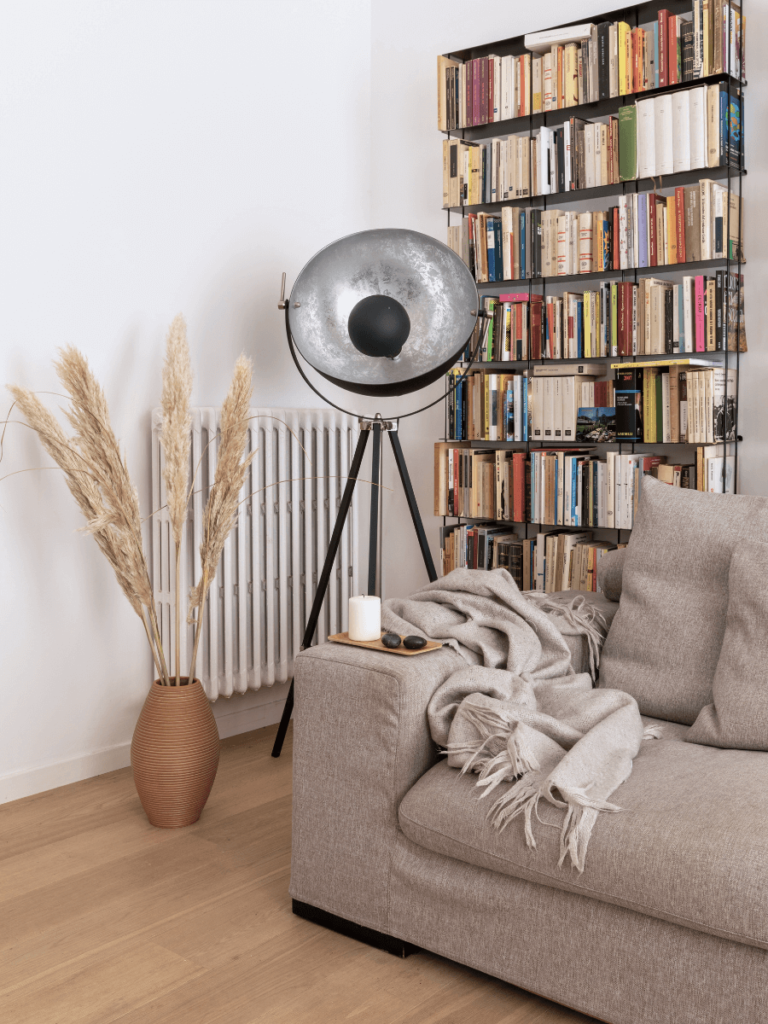
Now you need to determine what you already own and what you will need.
Understanding what you have and what you need in your living room is a simple way of determining where to begin with decorating a living room.
Your living room is an important room because it’s where a lot of people spend a lot of time… even a small room can be made into a great place.
Here are the elements that most people need in a living room design:
- Seating – typically one main area of seating such as a couch and potentially other smaller areas such as accent chairs.
- Storage/Table Space – typically items like a coffee table and side tables, and potentially items such as shelves, ottomans, etc.
- Rug(s) – such as a main area rug and potentially some small other rugs such as by a window, door, in a corner, by furniture pieces, etc.
- Lighting – lighting such as floor lamps, wall lamps, table lamps, and even understanding how much natural lighting the room gets.
- Entertainment – since living rooms typically have a goal of some sort of entertainment, it is important to understand what you need:
- TV/Entertainment Center/Fireplace – where are you able to hang or put a TV entertainment center or fireplace in your space
- Gaming Consoles – where will you put your gaming consoles
- Books – perhaps you will include a bookshelf or even a reading nook
- Hosting – if you plan on entertaining a lot perhaps conduct a furniture arrangement where the seating is condusive for conversation
- Window Watching – if you enjoy looking outdoors, facing seating towards the windows is a great way to achieve that.
Typically, for a balanced design, having a few large pieces or larger pieces and then more smaller pieces provides a dynamic look with different shapes.
Designing Your Living Room Big To Small
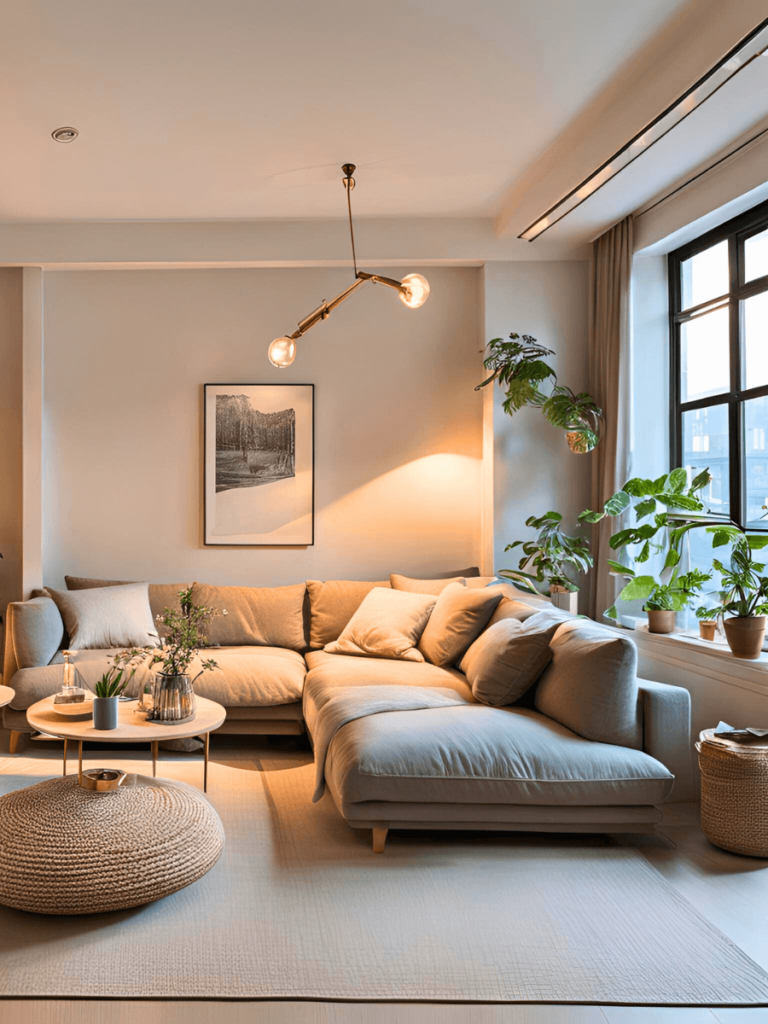
If you were to tell someone you were deciding how to decorate a living room and you told them the first step you did was purchase some decorative candles they might look at you like you’re losing it.
Why?
Typically, when designing a living room look you start from big to small — so think:
👉 design, purchases, furniture layout… etc. before light fixtures and your gallery wall.
Sometimes it can be a cool idea to decorate a room based on a piece of inspiration such as a memory, but for most people, it’s more practical to determine interior design styles first.
Therefore, start with the big items first and then the small ones.
Here is an easy formula to follow:
Firstly
Determine your main seating, main storage, main tabletops, main entertainment, and main lighting sources and you already have a great idea of what you are looking for.
Secondly
Determine the supporting items – do you want additional seating, smaller sections of space such as a reading nook or small dining area
Thirdly
Determine the different aesthetics, colors, and materials, you want to incorporate and reflect that in your wall paint, furniture choices, etc.
Preventing Getting Overwhelmed When Learning How To Decorate A Living Room
Rome wasn’t built in a day. Nor will your living room.
A simple solution is to break it down into more manageable chunks. Make a list of what needs to be done and when and check things off as you go.
It’s important to be reasonable and realistic about what you want to get and what you can get done.
Pro Tip
If you have started off and have already found yourself not achieving your goals, chances are you’re not being realistic. It’s important to be realistic to prevent getting overwhelmed. If you constantly feel like you’re trailing behind or not getting enough done it’s going to get to you and it will feel less rewarding when you do accomplish things.
How Do You Start Decorating A Living Room – 29 Easy Tips
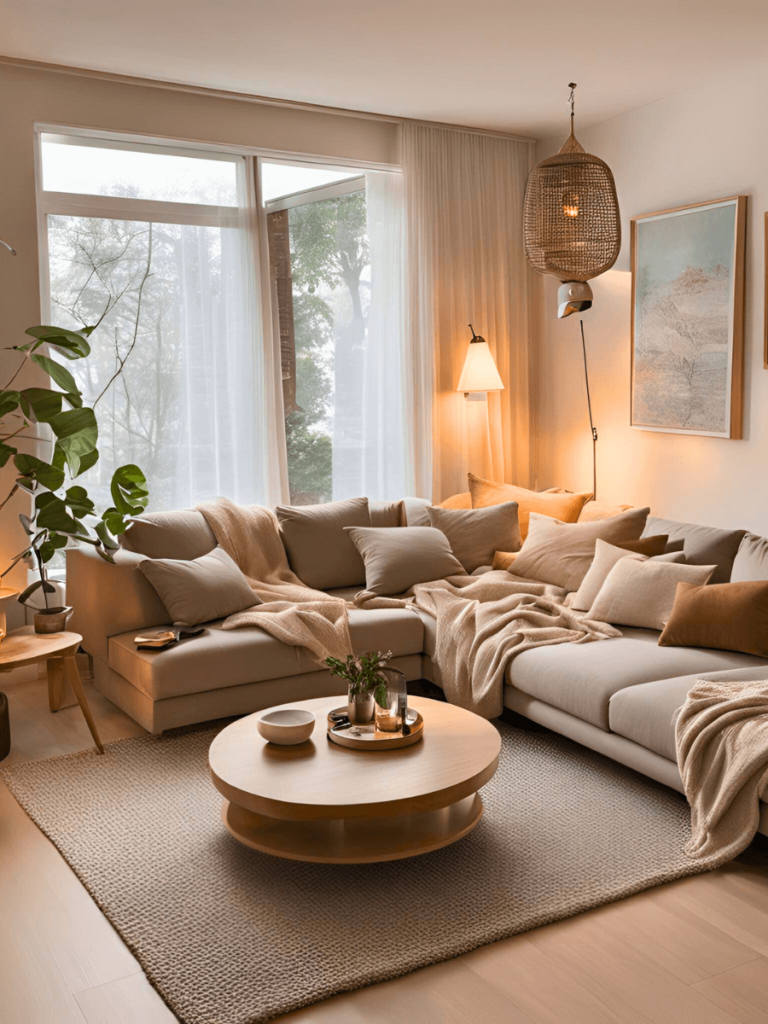
1. Use the 60-30-10 color rule (which involves using three colors and the following percentages) to create a balanced look.
Choose your main color and use it in 60% of your space, use your secondary color that compliments it for 30% of your space, and your accent color for 10% of your space.
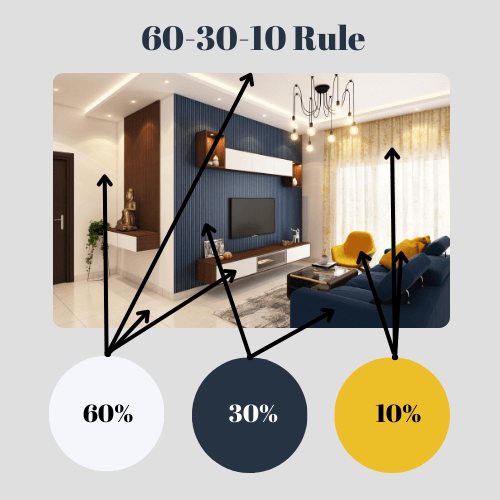
2. Use neutrals if you aren’t comfortable with bold colors
To prevent hating a color scheme later on and to save time and money use more neutral colors.
3. Stick with similar hues (lighter) / shades (darker), and tones (warmer vs. colder) to make a more cohesive look.
4. Use an accent wall to brighten a space and draw your eyes inwards towards it.
5. Don’t buy a paint color simply because you like it.
The right paint color may not simply be your favorite color, and it can show up completely differently depending on the lighting and layout of your space.
6. For wall paneling, you can use simply a darker shade of the same color for a cohesive look that draws your eyes upwards.
7. Hang your wall art at eye level.
8. Don’t be afraid to switch out wall art during the holidays or seasonal changes.
Paintings or art don’t need to remain on walls year-round. Swapping it out can make your house feel more refreshed and also seasonal-based pieces of art are fun ways to get in the spirit.
9. Don’t block walkways – consider the natural flow of a room!
Don’t block the natural walkways that are formed by sectioning in a room. It can make your home feel cluttered and disorganized.
10. Place your accent color all around your room rather than just in one area to create a more balanced look.
11. For wall pieces stick to a balanced formula.
Try to stick to a formula rather than hanging random pictures you like such as one large piece of art, one large piece of art surrounded by smaller pieces, etc.
12. Prevent using one singular ceiling light in the center of your room.
Opt for lighting that is lower and has smaller fixtures around the room, especially in areas that need it such as a corner.
13. Consider a balance of ambient lighting (main lighting) and accent lighting.
In a space, prevent the room from being overpowered or underpowered.
14. Utilize sectioning in your living room furniture layout to create a cozy living room (especially if you have an open floor plan).

15. Utilize matching wood tones!
Don’t utilize a billion different wood tones, especially the warmth and coolness of the wood, especially if the wood pieces are next to each other.
16. For a modern living room look, utilize similar styles such as minimalism to prevent having to spend money on more items to create your look.
17. Aim to buy furniture that is the right size for your space!!
A small couch in a large space makes the room look empty and a large couch in a small space makes a room look cluttered.
18. The best way to learn how to decorate a living room decorate a space is to purchase items along the same theme over time.
Purchase items the same as the other items in your living area over a longer period of time. It makes it more meaningful to you rather than staged, and it prevents spending a bunch of money all at once.
19. Utilize light figures that fit your space and aren’t overly small
20. For a more cohesive and upscale look put family photos in black and white with a large space around the frame.
21. For room wall decor ideas take photos online, remove the backgrounds, and arrange them to see how they will look
22. Get a carpet that can fit under the front legs of your seating area
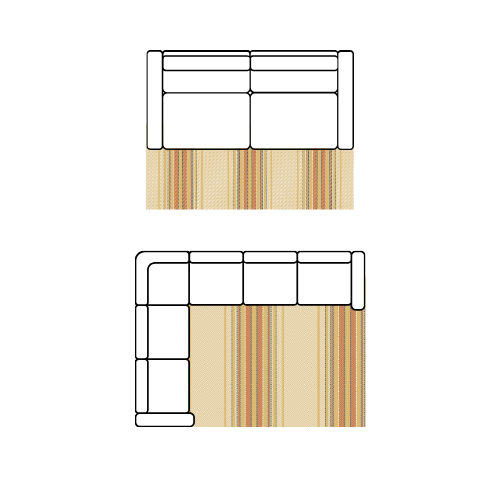
23. Get neutral covers for coffee table books for a cleaner look
24. Rather than buying a bunch of generic art, consider art pieces that you truly enjoy
The right piece will stand out to you and make your house feel more like a home rather than a hotel.
25. Select light fixtures with shades and colors that match the interior design or don’t take away from the look.
25. For small spaces an easy way to decorate your space while adding extra storage is to use hidden utility spots.
26. Consider using storage ottomans as living room decor as well as extra storage and seating.
27. Use items with multiple uses such as a pullout couch or pull-up coffee table with a desk.
28. For living room ideas, consider incorporating items that remind you of your childhood home or a place you felt safe to make your house feel cozier.
29. Consider using a theme or even loosely themed elements such as seaside-themed items to brighten your space and make you feel happier.
I hope you enjoyed these ideas for how to decorate a living room!
